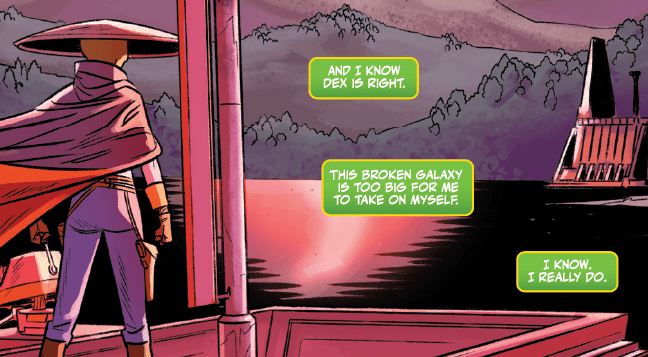We’re talking space pirates and morality in the galaxy far, far away as we dive into a pivotal relationship of Star Wars: The High Republic Adventures (Phase 2).
Throughout my issue-by-issue analyses of The High Republic Adventures, I have done my best to not hyper-focus on a specific character. Each new installment—and the run as a whole—is an ecosystem of different characters, relationships, and themes. All weaving with each other in beautiful ways. Yelling about my singular Glup Shitto is for my blog and my Twitter account.
However, as Sav Malagán wrestles with guilt for failing to rescue the Pirate Queen Maz Kanata, the topic has become unavoidable.
So let’s talk Long John Silver.
I have already written extensively about how Dexter Jettster embodies Robert Louis Stevenson’s classic pirate. My comparisons in that article are primarily about Stevenson’s novel, Treasure Island. Much of Dexter Jettster hearkens back to the original Long John Silver. However, since the publication of that essay, we’ve been blessed with Phase II of The High Republic Adventures. And in Adventures, we’ve received notes of a different ‘Silver.’ One who shares Dexter Jettser’s original 2002 debut with the adaptation Treasure Planet.
This is not simply an exercise in comparison. By examining Silver’s role in Treasure Planet, we have an example of thematic and visual language within storytelling. An example that translates very well into The High Republic Adventures and Dexter Jettster’s role in Sav Malagán’s journey.
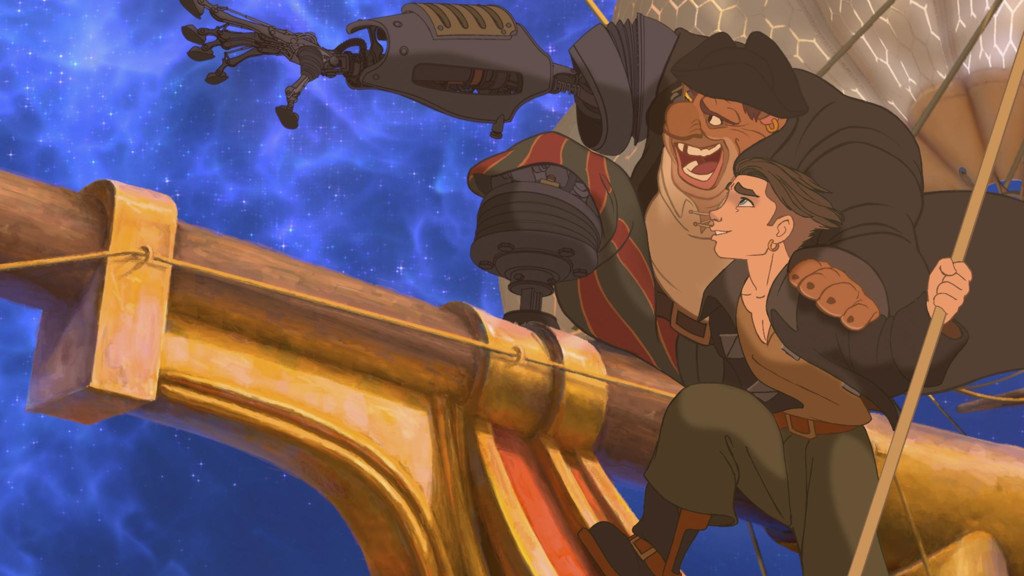
Treasure Planet makes an exceptional effort to create parallels between John Silver and the protagonist Jim Hawkins. These two characters have outfits designed to reflect each other: black jackets, tan undershirts, and a left ear piercing.
The music in their establishing scenes is the same theme in different musical genres. “12 Years Later” has a shredding electric guitar to emphasize Jim’s status as a rebellious youth. “Silver” (the music track) has the energy of a sea shanty to speak to Silver’s (the character) seadog nature.
In The High Republic Adventures, Sav Malagán also begins with an outfit that reflects an elder pirate. Blaster holsters slung over white shirt under a high collared poncho.
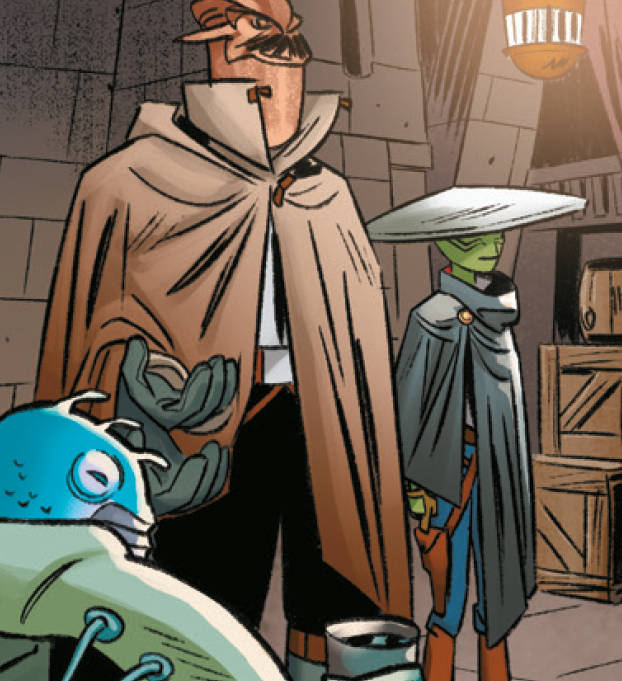
Comics may not have music, but Dex and Sav’s establishing scenes—like Jim and Silver’s—carry similarities. Sav begins the comic by scampering out into the night, leaving behind her usual Jedi community, shedding the mask of Padawan that she wears, and paying a droid two credits to ferry her clandestinely across the lake, to a place where she recklessly starts a fight with a cop. Immediately after his proper introduction, Dex scampers off into the night, leaving behind his usual community, shedding the cheery mask worn around them, paying a droid two credits to ferry him clandestinely across the lake, all to recklessly chase down the same cop.
Like Silver to Jim, Dex is established early on as a foil to Sav Malagán. This indicates watching him will also provide context for how we understand Sav. Furthermore, Silver and Dex are both established as father figures for their respective protagonists.
In Treasure Planet, Jim has an absentee father. When the ship’s captain orders Jim to be the cabin boy under Silver, Silver ends up stumbling into the father role for Jim. He teaches Jim the various rules of sailing and of manhood. He comforts and uplifts Jim at his lowest point, and provides the life lesson that defines his arc.
In The High Republic Adventures, Sav has a father figure in Jedi Master Kaktorf. However Kaktorf is father figure that Sav is incapable of pleasing. She’s not able to live up to his rules, and therefore wants to be a pirate. Sav follows Dex specifically to ask him what his rules are for becoming a pirate. Dex is voluntold into fatherhood. Dex comforts and uplifts Sav at her lowest point, and vocalizes the life lesson that defines her arc.
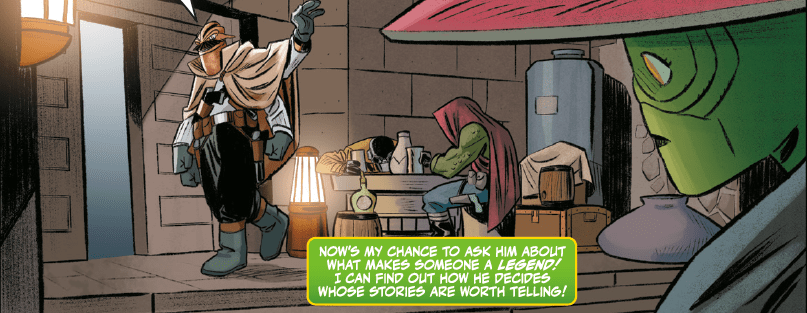
As father figures, Silver and Dex are possible futures for Jim and Sav. These pirates represent who these teenagers might one day become, based on their choices in this moment of their lives.
For all the positive impact he has on Jim, Silver is meant to be a warning sign. He is a signal for Jim to correct his course, lest he end up like the old scoundrel. Treasure Planet – like its source material – ultimately sides with and rewards adherence to legal authority. There is an affection that the novel and every adaptation has towards Silver, allowing him to escape judgement by the story’s end. However, Jim is proven a hero, a man, or both by his alignment with the powers that be.
In Treasure Planet, this is expressed specifically through Jim joining the military. The cops that once arrested him now salute him. Silver may be there in spirit, smiling down on Jim’s growth, but Jim’s visual transformation from matching Silver’s dark garb to the military white indicates that Jim has chosen the correct path.
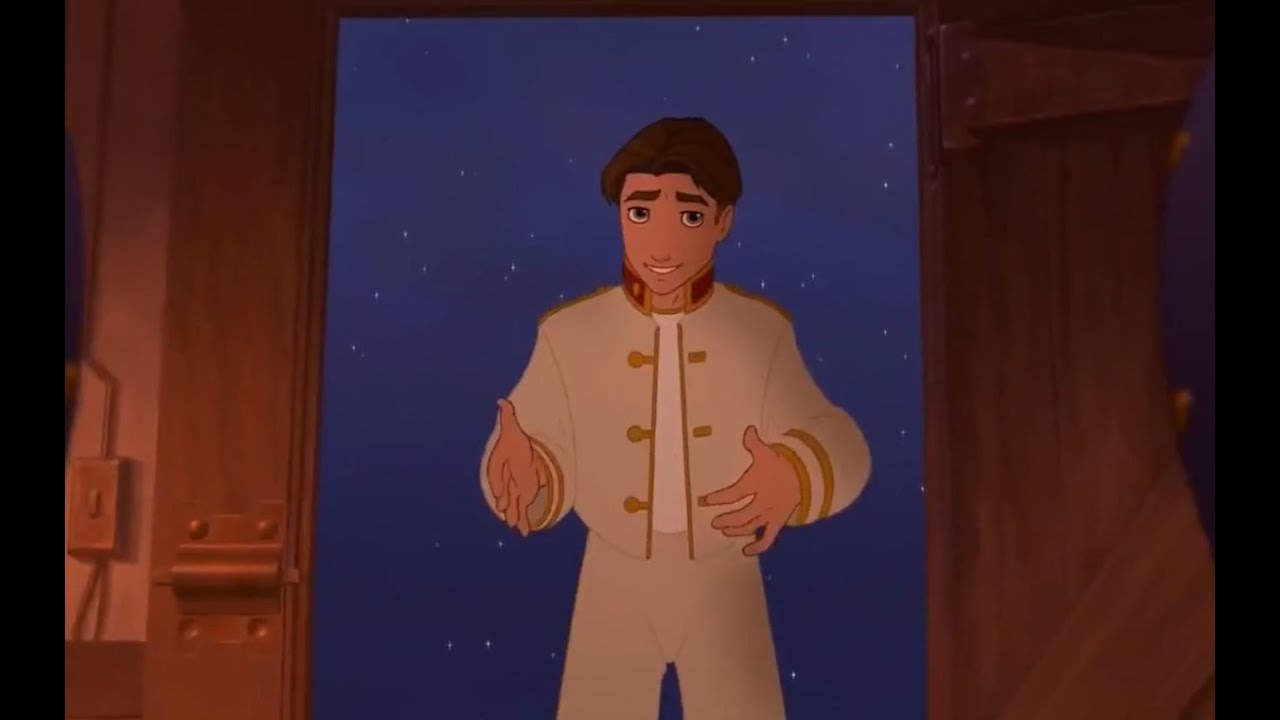
In contrast, The High Republic Adventures ends with Sav reflecting Dex in even greater measure. The cop that once threatened to arrest her (and Dex) is convinced by Sav to become a pirate himself. Sav not only remains in the outfit that matches Dex, but she has stepped up into his place as a storyteller, while Dex looks on with approval.
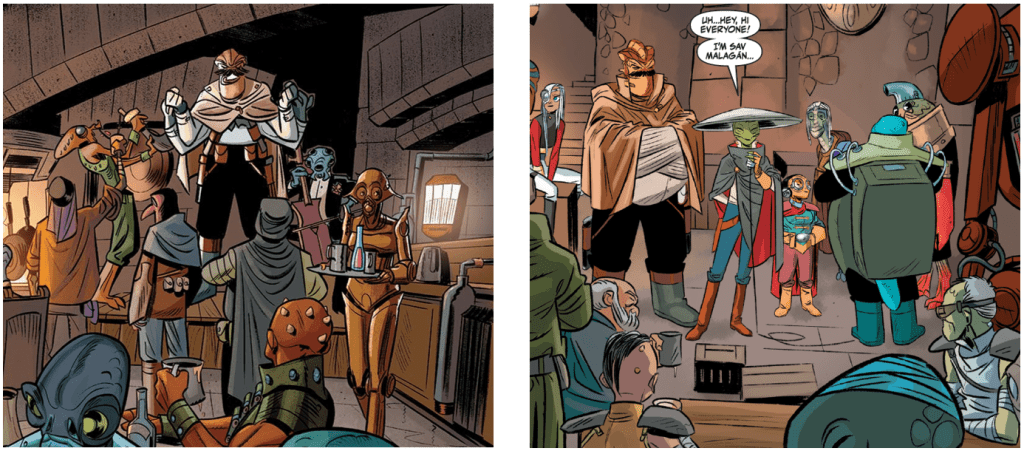
With these divergent endings, one might leap to the conclusion that Treasure Planet’s morals command conformity to the law while The High Republic Adventures morals command conformity to the standards of piracy. After all, Sav stays with the pirates in the end. She retains and increases her parallels to her pirate father figure. In a lesser story, this could simply be Sav adhering to a different rule set.
But that’s not how The High Republic Adventures works. Sav’s story is against conformity itself.
The core message of Sav Malagán’s journey is that rules should not dictate who we are. The stark legalism of Kaktorf kept Sav from embracing her full self. Attempting to follow whatever “rules” Dex might have had for piracy also cut Sav off from the Jedi part of her.
But Dex himself never imposed any rules on Sav. In fact, in Issue #5, Dex openly disregards such a legalistic mindset.
When speaking of his feelings towards Maz Kanata, Dex explains he and Maz don’t follow what a relationship ought to look like. They don’t fit within the standard rules of a romance (it’s rather queer of them). “What we call each other, what our rules are… it doesn’t matter much. We’re honest with each other, that’s what matters.”
Sav is proven a hero and comes of age by rejecting the notion that she has to choose to conform to one rule set or another. She instead embraces her Jedihood and piracy in equal measure.
“All this time, I was asking the wrong question. Playing by other people’s rules, letting their simple notions of the galaxy become my truths. Never again. Because the galaxy is not simple it’s not black and white. It’s not this or that. It’s so much better… and so am I.”
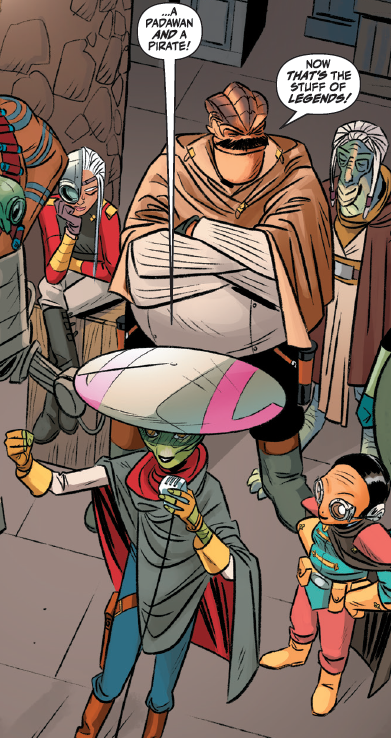
Crucially, Sav comes to this conclusion on her own. She is not around to hear Dex speak about how rules and labels don’t matter. This wasn’t some other standard dictated to her that she’s choosing to obey.
However, seeing this side of Dex, even without Sav, lets us the audience know that this is where we want Sav to go. Through her identity crisis, we want her to reach the point that what she calls herself, what rules there are… they don’t matter much.
But if The High Republic Adventures is just about refusing to conform, Sav would have taken off with Saya at the end of Issue #6. No rules, no loyalty, pure independence, and significant loneliness. That’s not a happy ending.
Important as it is that Sav comes to reject conformity on her own terms, it’s also important she comes to understand its true opposite through Dex. Because the true opposite of breaking yourself to fit a rule set is finding a community that embraces your wholeness.
If the first half of Dex’s statement in Issue #5 is about the disregarding rules, the second half is about living in community. “…We’re honest with each other, that’s what matters.” And this is what he gets to communicate directly to Sav in Issue #7.
This issue begins with Sav under the crushing weight of the supposed rules of the galaxy. This is expressed through Sav’s internal thoughts—
“My failure is complete. Failed as a Padawan. Failed as a pirate. That makes me two for two. Every time I’ve gone undercover, I’ve failed at it. Even failed at being a friend.”
—and through thematic callbacks to the embodiment of legalism: Jedi Master Kaktorf. Sav tried to chart her own course away from the rules, and all she can see are the people she failed to help. Through one father figure’s metaphorical and actual presence, she is bombarded with demands to conform once more. It’s into this moment that Dexter Jettster speaks.
“This isn’t your fault. Sometimes when you’re a very powerful person, it’s easy to feel like you gotta take on the whole galaxy. And you are a very powerful person, Sav Malagán. But the galaxy is still too big for one person to take on alone. Even you.”

At her lowest point, Sav isn’t uplifted by being ordered into another set of rules. She’s uplifted by a father embracing her as she is and calling her into a community.
This is what The High Republic Adventures has been about from the very beginning. We’ve seen how the villains fail to engage in community and how the heroes repeatedly choose community, even when it’s difficult. Writer Daniel José Older has also stated that it’s not just about Sav finding the one perfect mentor to replace Kaktorf. It’s about finding the people – plural – who will support her. Alak, Coromont, Maz, Raf, and Tera Sinube all contribute to the future Sav needs. It’s not just Dex.
Like Long John Silver to Jim Hawkins, the language of the storytelling has placed Dexter Jettster as a foil and father figure to Sav Malagán. He is her entry point into community and the voice of the moral thesis. And like Jim’s departure from Silver’s path, we can compare Sav to Dex as a measure of her character arc.
At the start of The High Republic Adventures, Sav chases after Dex to find out what she has to do so that he will tell her story. At the end, he steps back to give Sav the space to tell it how she sees fit. Not conformity, but community.

